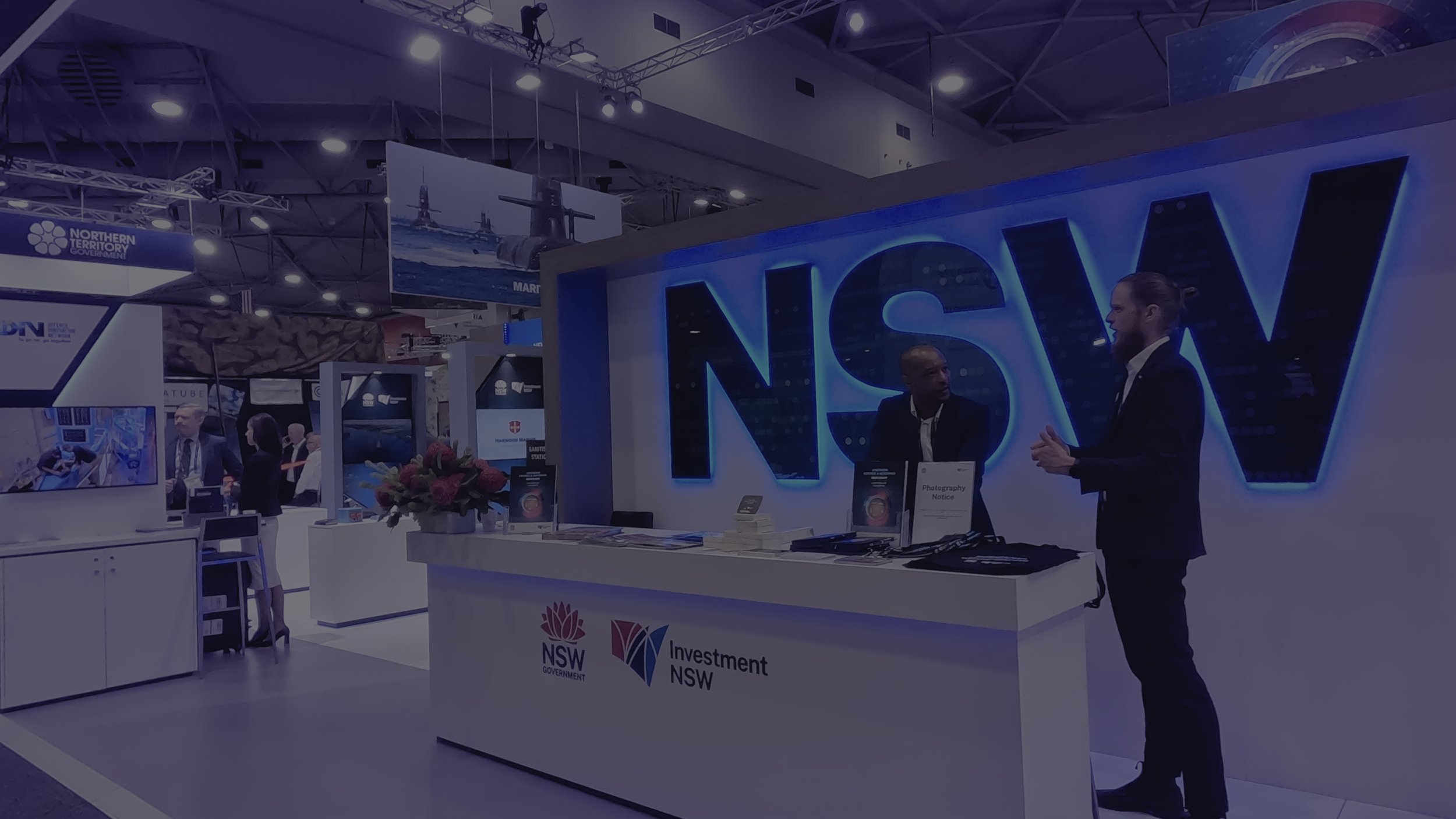
Land Forces 2022
Thanks to everyone who came to see us
Thanks also to Investment NSW for their support.
↓
2022:
Three observations
After the event we spent some time recollecting our experiences and observations from Land Forces and considering some of the broader questions and implications for the future:
1.
Training &
Simulation
VR is becoming more and more of a staple for both air and ground based simulations.
This year saw the emergence of a host of new ways to use technology to overcome the costs of effective military training at scale.
VR/AR/MR has featured in this discussion for a number of years now, and this year a number of companies were exploring opportunities to utilise VR complemented by more immersive hardware to recreate field based operations in a scalable environment to allow a great throughput of training and practise.
There's an interesting split in focus here between companies that are trying to recreate as much of the real experience as possible in the attempt to replicate reality, and those that opt for pragmatism over realism and utilise existing tech to provide easier more scalable access to training tech.
2.
3D
Printing
Deployable 3d printers can now produce robust parts within minutes.
3D printing technology has advanced to the point where deployable 3D printers can now produce machine grade parts within minutes.
How might this affect the planning and logistics of a deployment in the future when parts can simply be printed on site? Rather than each individual part needing to be available, only the raw materials need to be accounted for now.
Deployable printers could solve a critical point of failure for resupply and introduce a new logistical practice in raw material management. Nevertheless, the potential to rapidly create any necessary parts within minutes promises a host of positive impacts for deployed personnel. When you consider the advancements in things like 3d printed food, the deployments of the future could be very different.
3.
C2 and
connected data
Almost any device or equipment can now read from and/or contribute data to an operation.
From connected rifle scopes that can track targets and share the recorded location with nearby friendlies to UGV's loaded with a plethora of surveillance tools, we saw an array of connected devices.
Portable compute carried by soldiers to collect and process comms, PLI, health, weapons data, more and more of the equipment used by deployed personnel are now being made with connected sensors built in to share and receive information about their situation. creating greater interconnected insights on the battlefield..
With many of the data sensors having a bespoke Command and Control interface coupled with so much more data being collected. The challenge going forward will be viewing, managing and contextualising the data, to harnessing the insights derived during any given operation without getting lost in the noise.
Thanks again to everyone!
See you again in 2024














